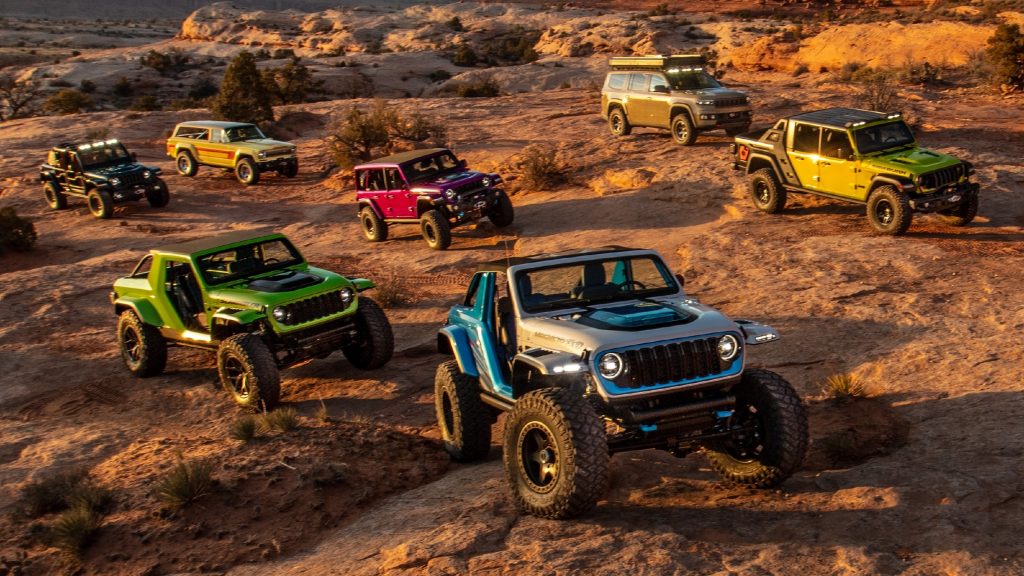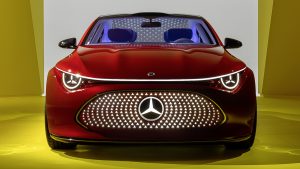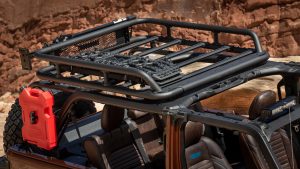Originally named Ford Transit Supervan, this promotional car is at its fourth iteration. Now using electric powertrain, it will compete at the Pikes Peak International Hill Climb

- Romain Dumas is going to drive the SuperVan 4.2 at the upcoming Pikes Peak race
- This is the latest version of a long line of high-performance vans designed by Ford
- The first one, built in 1971, was literally a van body dropped on a race car’s chassis
Automakers have an intriguing playful side. Sure, they are all about sales projections, new technologies, and market research most of the times. But there are moments when they do pretty much the opposite. Whether for publicity, for team motivation, or to honor their origins, they engage in an entirely unusual project every once in a while. This, as you have certainly figured by now, is one of those cases.
The short version of the story is that Ford built a fully electric van to compete at Pikes Peak. Being electric makes sense in these days, and choosing that van body style… well, Road & Track has done a great job at capturing the essence of this competition. However, this story has a long version as well. It turns out that the very first Ford Transit Supervan appeared in 1971. This article is going to walk you through all that.

First, let’s talk about concept cars
The fact that they will not reach mass production means a lot. There are virtually no comfort, emissions, or safety limits to obey, so designers can go crazy. They can create far-fetched concept cars to illustrate the carmaker’s next steps; production-ready ones to anticipate a new release; or track-ready cars to compete at the next race. Or they can simply go with the creative flow and see what machine will come out of it.
Ford has had its share of exciting concept cars. The Mustang had several design proposals prior to the car that hit the streets. The Probe series brought a futuristic touch that ended up spawning a production car. There were several minicar concepts offering novel solutions to optimize urban transportation. And there are many race cars with electric powertrain these days. But now, we are going to focus on a specific one.
1971 Ford Supervan 1
The regular Ford Transit first appeared in the UK in 1965. It has been quite popular there ever since, so the company decided to play with that image. Terry Drury Racing built an unthinkable project for Ford: placed a regular Transit’s body on the chassis of a GT40 in 1971. Yes, the same GT40 that demolished Ferrari at Le Mans five years earlier. The Supervan was born with a 5.0L V8 installed at the rear and good for 435 hp.
The best thing here is its simplicity: it is a van with an insane engine. The video above shows intense body roll, huge aerodynamic drag, and a V8 engine that takes up any cargo room. But none of that matters: the first Supervan and its massive tires reached 60 mph in 7 seconds, 100 mph in 21.6 seconds, and went on to a maximum of 150 mph – “if you had the nerve” to drive it to that point, as Motor Trend aptly wrote.
1984 Ford Supervan 2
The second generation came in 1984 and made use of all the improvements brought to motorsport. That steel body made room for a new one made of fiberglass, Kevlar, reinforced plastic, and carbon fiber. The aluminum chassis came from Ford’s C100 Group C race car, which failed to compete against the Porsche 956. This Supervan’s engine actually came from the same donor: a 3.9L V8 good for 590 hp at 9,500 rpm.
As you can see, that construction and the bespoke aerodynamic items made this van even faster than the original one. However, it also went further from the original concept. It is no longer a van with a race-car engine, but a race car that turns out to look like a van. Ten years later, Ford chose to update the Supervan by reworking the previous one. Therefore, the second generation automatically ceased to exist in 1994.
1994 Ford SuperVan 3
This was the first time Ford released the Transit Supervan right after a new generation; the previous ones came at the end of their respective lifecycles. However, there were only partial updates: Ford brought the front fascia to date and replaced the engine with a newer Cosworth unit. The 3.5L V8 made up to 700 hp and equipped some F1 cars in the early 1990s. Some of those were Ayrton Senna’s McLaren MP4/8 cars.
Years later, Ford replaced that engine with a 3.0L V6 that made 260 hp. While that was much less, it came with lower maintenance costs and was easier to drive for journalists and VIPs. This Supervan also received new liveries over the years and turned out to be the longest-running so far. Once Ford ended its cycle, it also started the longest time it spent until the release of a new model. That would only happen in 2022.
2022 Ford SuperVan 4
That 20-year hiatus ended with a lot of changes. First of all, the Ford Supervan no longer uses its “Transit” prename. Secondly, it became fully electric with all the consequences that brings: that delicious V8 engine sound made room for instant torque delivery and maximum power of almost 2000 hp. Last, but not least, this prototype was built for the Goodwood Festival of Speed with a design solution that is just brilliant.
We all know that such a boxy shape does not really favor aerodynamics. Ford changed the upper part of the body to make the two-seat cabin end at a typical teardrop shape. Then, it preserved the long roof but added a pair of flying buttresses that mimic the side design of an actual Transit van. Another highlight is the Tire Cleaning mode, which applies brakes to one axle to allow the other to do a standing burnout.

What about the Pikes Peak van?
One year later, Ford updated its latest Supervan to compete at the Pikes Peak International Hill Climb this weekend. The powertrain lost one of its four engines and now offers “just” 1,400 hp. Ford backs the move by saying it reduces weight and better distributes it. The aerodynamic pack is new too, with a larger front splitter, new side skirts, and that massive double rear wing. And the roof only covers the cabin this time.
There are other changes as well, such as lighter items and Ford Performance’s latest livery. Driver Romain Dumas is pretty acquainted with electric cars at Pikes Peak, so the Supervan 4.2 is off to a great start. We know that such a vehicle may not break any records at the race, but it is an impressive feat of engineering nonetheless. Enginering with a touch of playfulness, high budget, and that delicious spirit of “why not?”

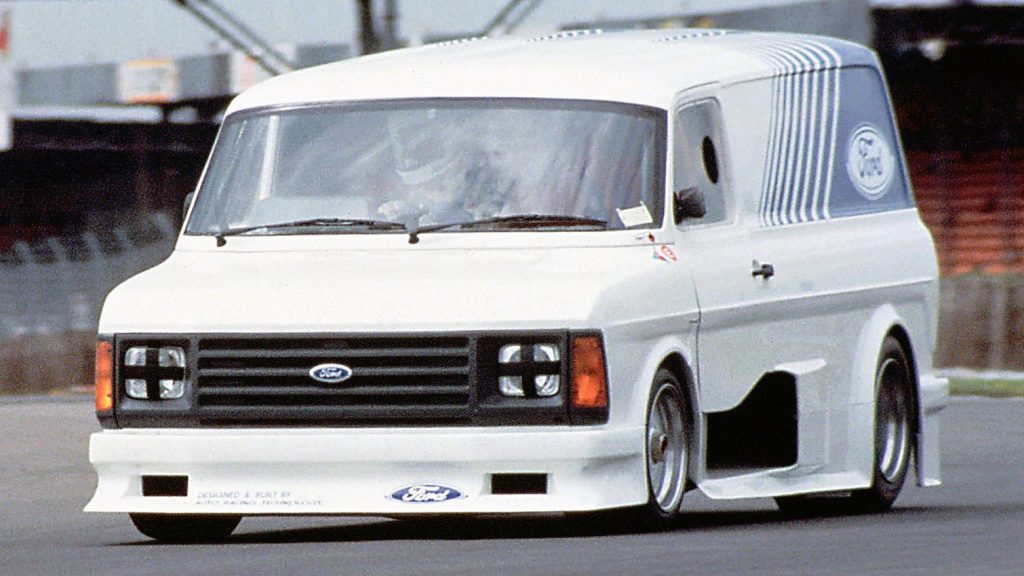
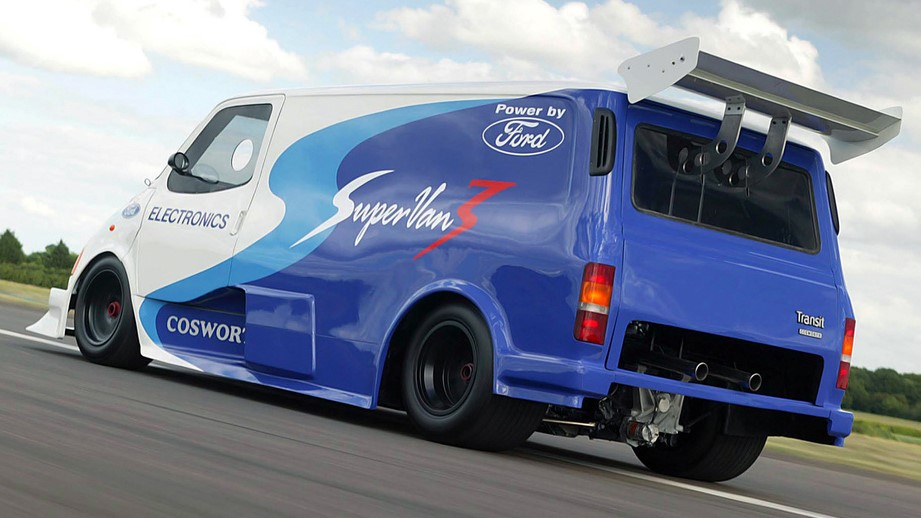
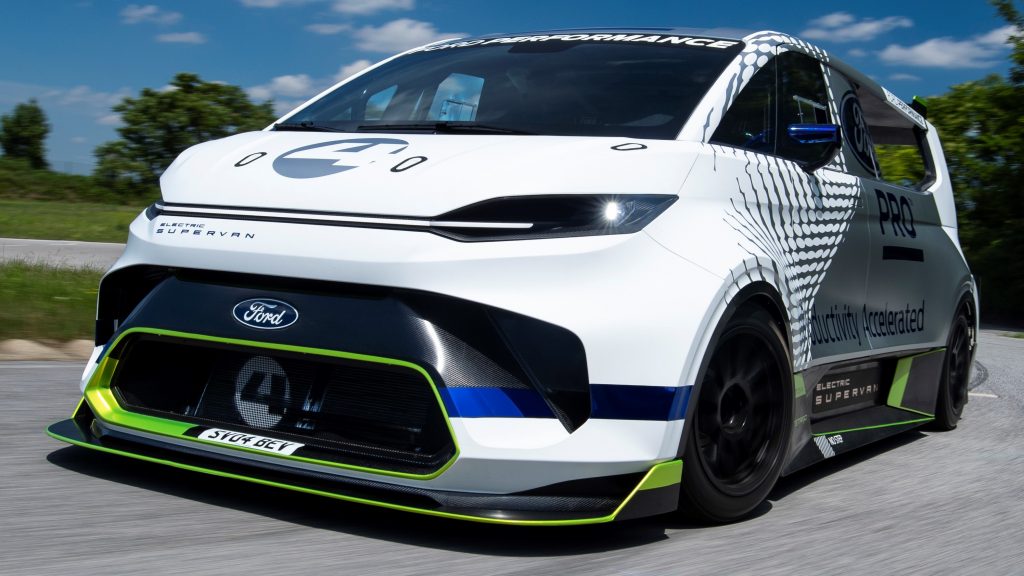
Ford had to tone down the Supervan’s eccentricities over the years, but that did not make it less exciting. This concept car went from a garage experiment to a legitimate race vehicle despite being big and boxy as a typical van. We admit that the latest generation has little in common with the original concept, but it is still successful at the purpose of promoting the Transit van. Now, let’s wait and see it at Pikes Peak!
You may also like
Jeep is also fond of promotional cars. It hosts the yearly Easter Safari with off-road fans from all around the world. The automaker also shows many exciting concept cars.
Danillo Almeida has explored his passion for cars in two distinct ways. The first one is his graduation course in Mechanical Engineering, which will hopefully lead to a job position in the field. The other one is expressing his knowledge and opinions on the matter through writing. Almeida has already contributed to blogs, stores, and websites in general writing automotive content in many formats.

